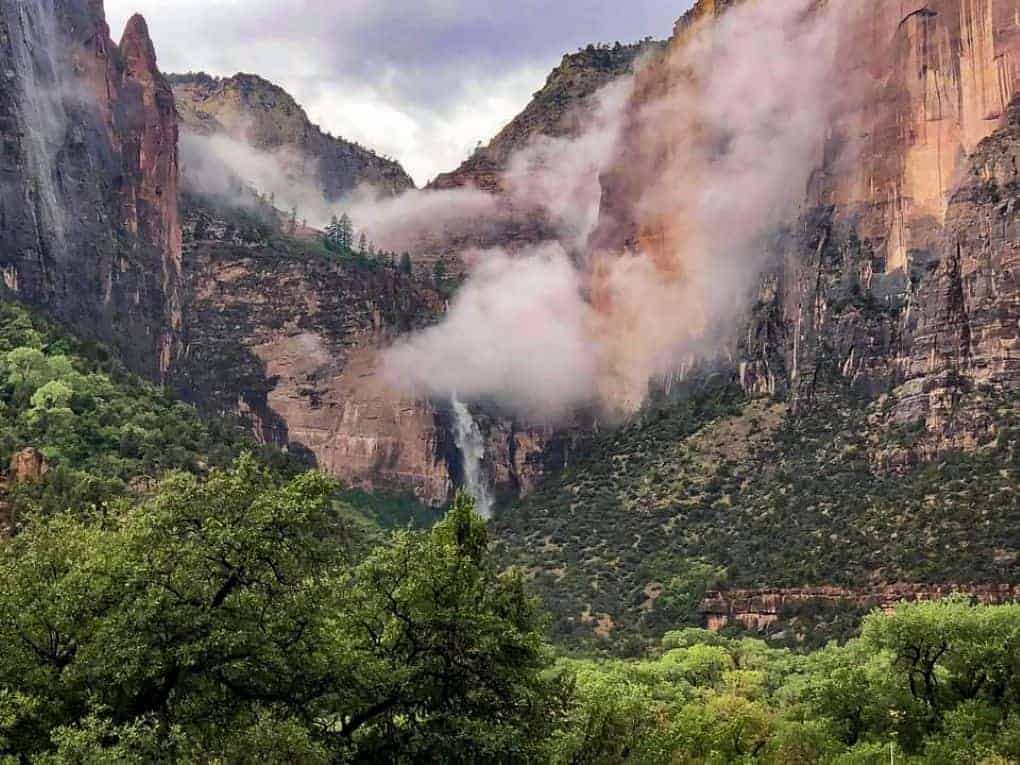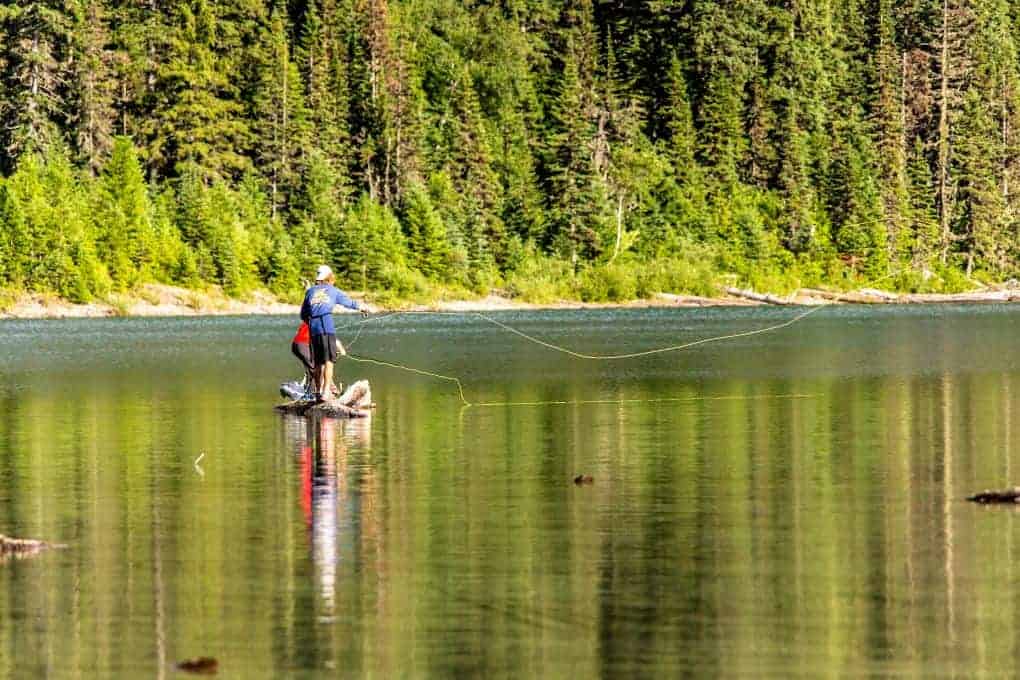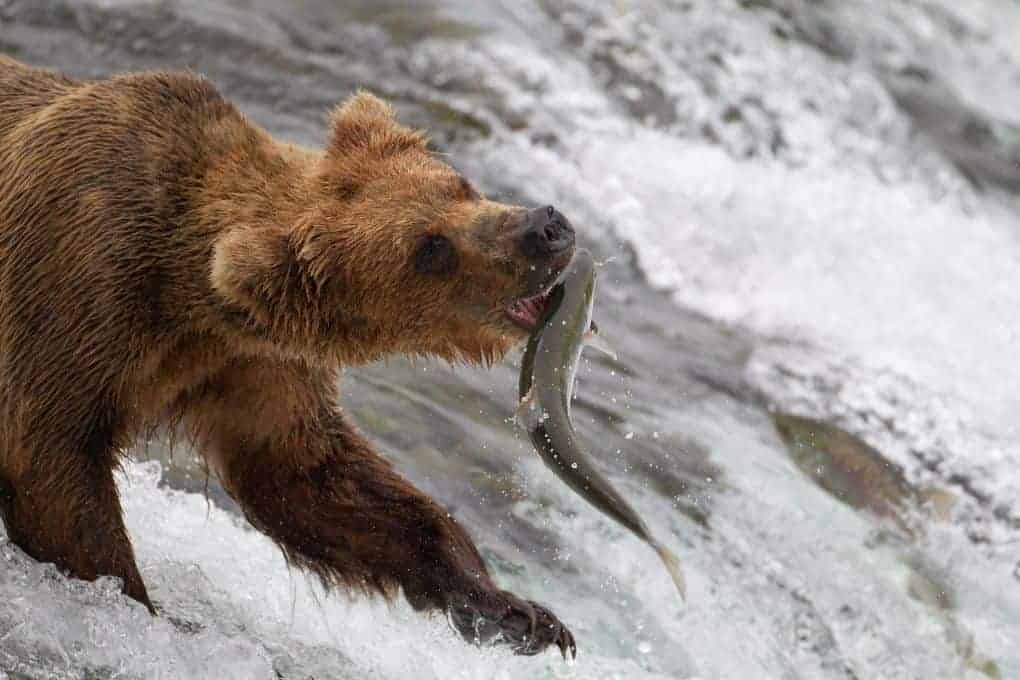Table of Contents
Updated June 2023
If you only have one day to visit Zion National Park, don’t stress—you can still soak in the stunning scenery, walk the famous trails, and feel the magic of this incredible red rock landscape. While Zion deserves several days, even a single day can leave you awe-struck. With a well-planned itinerary, an early start, and a stay at Zion Lodge, you can hit the major highlights, enjoy peaceful moments, and experience the soul of the canyon—all in 24 unforgettable hours.
Ready for your own one-day Zion adventure? You’ll walk away with dusty boots, a camera full of amazing photos, and memories of one of the most spectacular landscapes in the world.

We kicked off our Grand Circle Tour with a full day in Zion National Park, and it couldn’t have been a more breathtaking introduction. Grand Circle Tour. What makes this slot canyon so impressive is the sheer sandstone cliffs contrasted by the stillness of the Virgin River on the valley floor. Our tour in Zion National Park included a few memorable day hikes and a scenic drive on the canyon road before passing through the Mt. Carmel tunnel on our way to Bryce Canyon National Park.
This post may contain affiliate links, meaning if you purchase something through one of these links, we may earn a small commission at no extra cost to you! Read the full disclosure policy here.
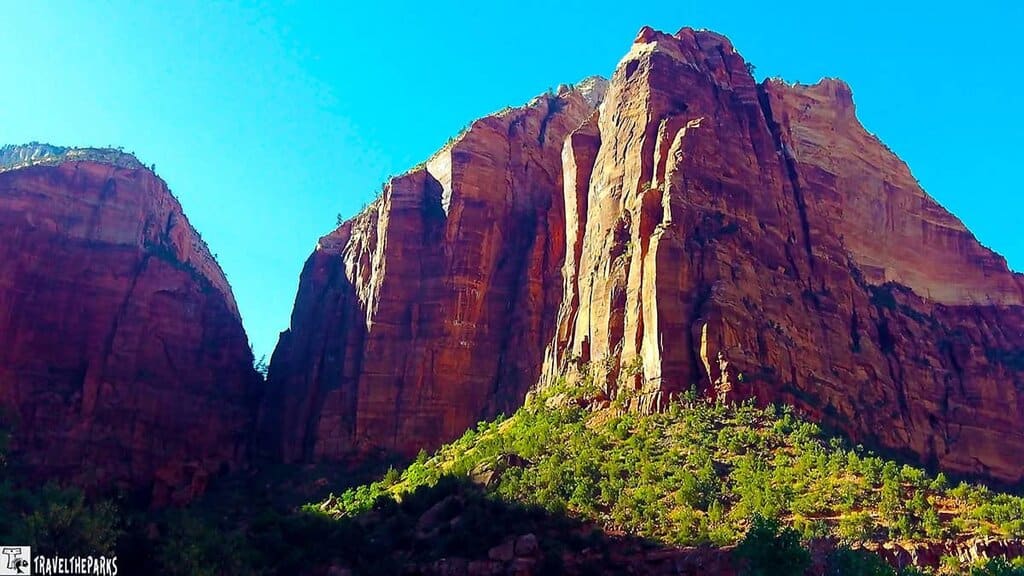
How do You Get to Zion National Park for an Unforgettable Visit?
- From Las Vegas, take Interstate 15 to State Highway 9 just north of St. George. Proceed through Hurricane to the town of Springdale. It’s about 30 miles after you exit the 15. Zion National Park is located just outside Springdale.
- From Salt Lake City, take Interstate 15 South to Toquerville Exit State Road 17. Follow State Road 17 to Highway 9. Follow the signs for the park on the left.The drive is approximately 3 hours from Las Vegas and 5 and a half hours from Salt Lake City.
As we drove into Zion on the beautiful Canyon Road, the amazing colors of the canyon walls caught our eye right away. I was quick to notice how the sunlight changes during the day. It colors the rock in different shades—like rusty reds, shining golds and dark purples—making a striking and almost dreamlike scene.
As we got further into the park, we saw mule deer calmly eating the fresh green grass along the Virgin River. Their calm presence brings a sense of peace to the wild landscape, reminding us that Zion is not only beautiful to look at but also full of life.

Planning Your Adventure: Know Before You Go to Zion National Park
- Operating Hours: Zion National Park is open 24 hours a day, year-round. The Visitor Center typically operates from 8:00 AM to 5:00 PM (hours vary by season).
- Entrance Fees: Private Vehicle: $35 (valid for 7 days). Motorcycle: $30 (valid for 7 days). Per Person (Bike/Foot): $20 (valid for 7 days). Annual Pass: $70 (unlimited entry to Zion for 1 year). America the Beautiful Pass: $80 (access to all national parks and federal recreation sites for 1 year).Fee-Free Days: National Park Service offers fee-free days on specific dates throughout the year, where entrance fees are waived. Check the NPS website for the schedule.
- Timed Entry Requirements: As of now, Zion National Park does not require timed entry reservations for general park access. However, certain activities like Angels Landing require a permit (obtained via a seasonal lottery).
- Shuttle Bus Requirements: The Zion Canyon Scenic Drive is accessible only by shuttle from March to November (private vehicles are restricted during this time). Shuttles run from 7:00 AM to 7:00 PM (spring/fall) and until 8:30 PM in summer. Shuttles are free and operate on a first-come, first-served basis. Arrive early to avoid long wait times.
- Best Time to Go: Spring (March-May): Mild weather, blooming wildflowers, and fewer crowds. Fall (September-November): Cooler temperatures and stunning fall colors. Summer (June-August): Busiest season; expect crowds and hot temperatures (over 100°F). Winter (December-February): Fewer crowds, but some trails may be icy or closed.
- Pet Policy: Pets are allowed only in developed areas (campgrounds, parking lots, and along the Pa’rus Trail). Pets must be leashed at all times (max 6 feet). Pets are not allowed on most trails, shuttle buses, or in the backcountry.

Essential Tips for Making Memories in Zion National Park Tips
- Research Your Destination: Start by researching your destination thoroughly. Learn about the culture, customs, and local traditions to immerse yourself fully in the experience. Familiarize yourself with the must-see attractions, off-the-beaten-path gems, and any safety precautions.
- Set a Budget: Determine your budget for the trip and allocate funds for transportation, accommodation, activities, meals, and other expenses. Being mindful of your budget will help you plan activities that align with your financial goals.
- Create an itinerary: Craft a flexible itinerary that outlines the places you wish to visit and the activities you want to partake in. Strike a balance between must-see attractions and leisure time to explore your destination at your own pace.
- Book Accommodations: Secure your accommodations in advance to ensure you have a comfortable and stress-free stay. Consider staying at locally run hotels, guesthouses, or bed and breakfasts for a more authentic experience. NOTE: if you plan to do any overnight wilderness camping, permits are needed, so book in advance.
- Pack Smartly: Pack light and pack smart. Prioritize essentials like comfortable clothing, appropriate footwear, travel documents, and any specific items you’ll need for your destination’s weather and activities.
- Travel Insurance: Protect yourself and your belongings by purchasing comprehensive travel insurance. This will provide peace of mind in case of unforeseen circumstances or emergencies.
- Health Precautions: Check if you need any vaccinations or medications for your destination. Carry a basic first-aid kit and any prescribed medications you might need during your trip.
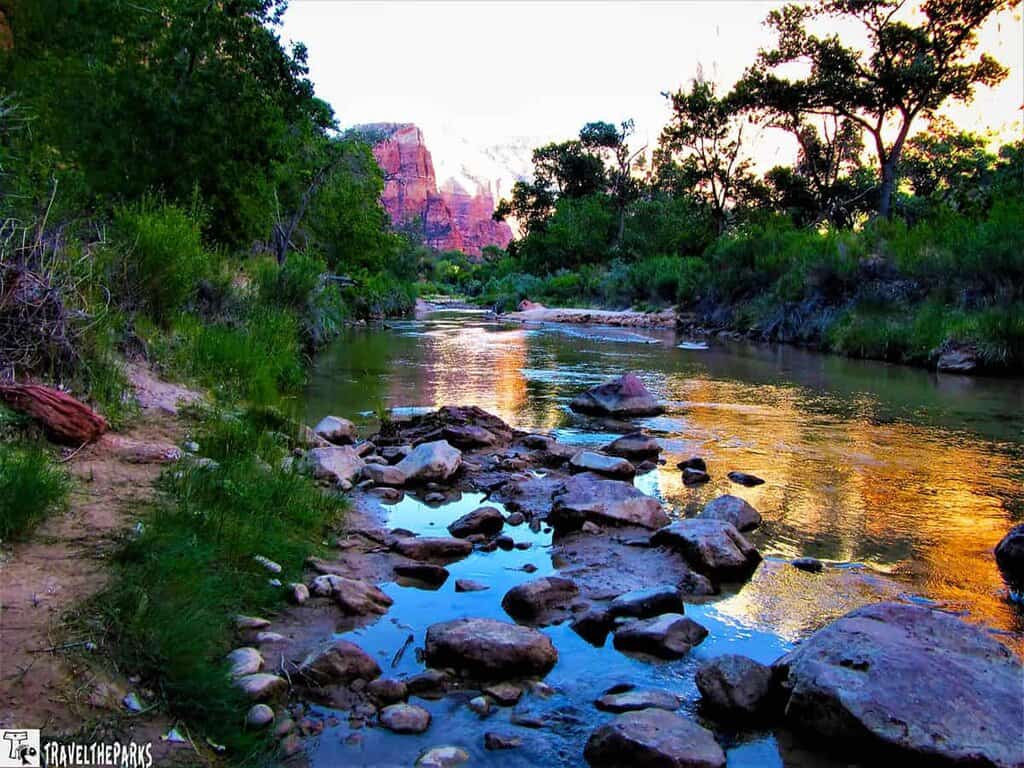
What to Bring for Your Perfect Day in Zion National Park
For your one-day itinerary in Zion National Park, pack 2-3 liters of water per person, high-SPF sunscreen, a wide-brimmed hat, and sunglasses for sun protection. Wear sturdy hiking shoes and moisture-wicking socks for rocky terrain. Bring high-energy snacks, a lightweight lunch, and a daypack with a first aid kit, multi-tool, and whistle for emergencies. Include lightweight, breathable clothing, a warm layer, and a rain jacket for changing weather. Don’t forget a trail map, camera, portable charger, and trash bag to pack out waste. For safety, carry a headlamp, emergency blanket, and trekking poles if needed. Be prepared, stay hydrated, and enjoy your adventure!
If you plan to do the Narrows Trail hike, invest in a good pair of wading socks and wading boots. These will keep your feet comfortable in the cold water. A quality trekking stick would be advisable for stability as the river rocks are slippery. You may also rent equipment at the visitor center or at a local shop in town. You can also view our packing list of recommendations for the National Parks. Download park information sheet for general park tips and hiking trail maps.
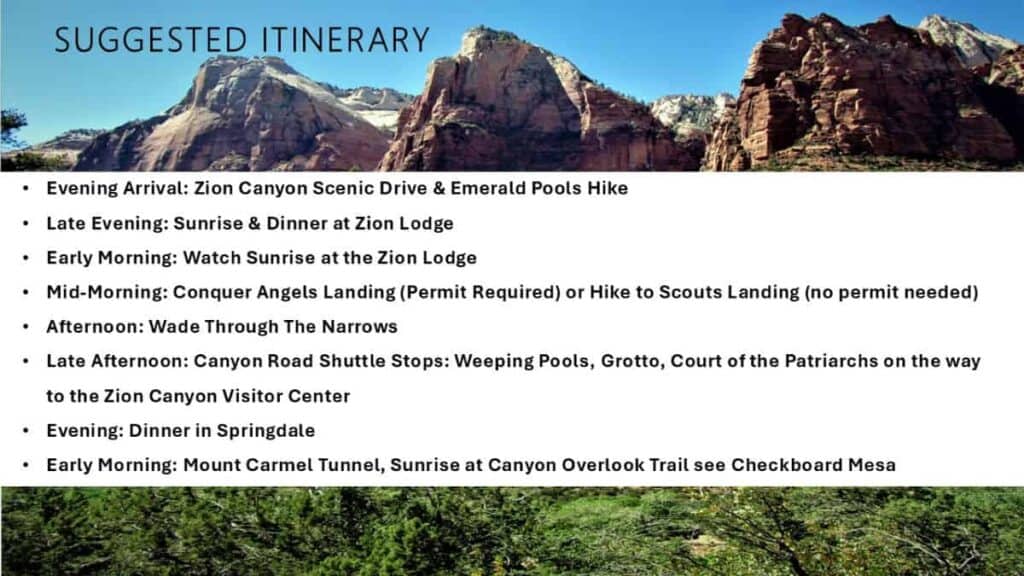
The Best Place to Stay for a Perfect Zion National Park Experience
Zion National Park has one lodge inside the park. Visitors need to book in advance as it fills quickly. We discovered that the name “Zion” means “a place of peace and refuge.” The lodge is conveniently in the middle of a narrow slot canyon, with steep vertical cliffs rising immediately behind the buildings. The tantalizing colors at sunset are mesmerizing. Your itinerary is better served by staying in the park, letting you spend more time enjoying Zion National Park. Best of all, you can hit the trails early before those staying outside the park.
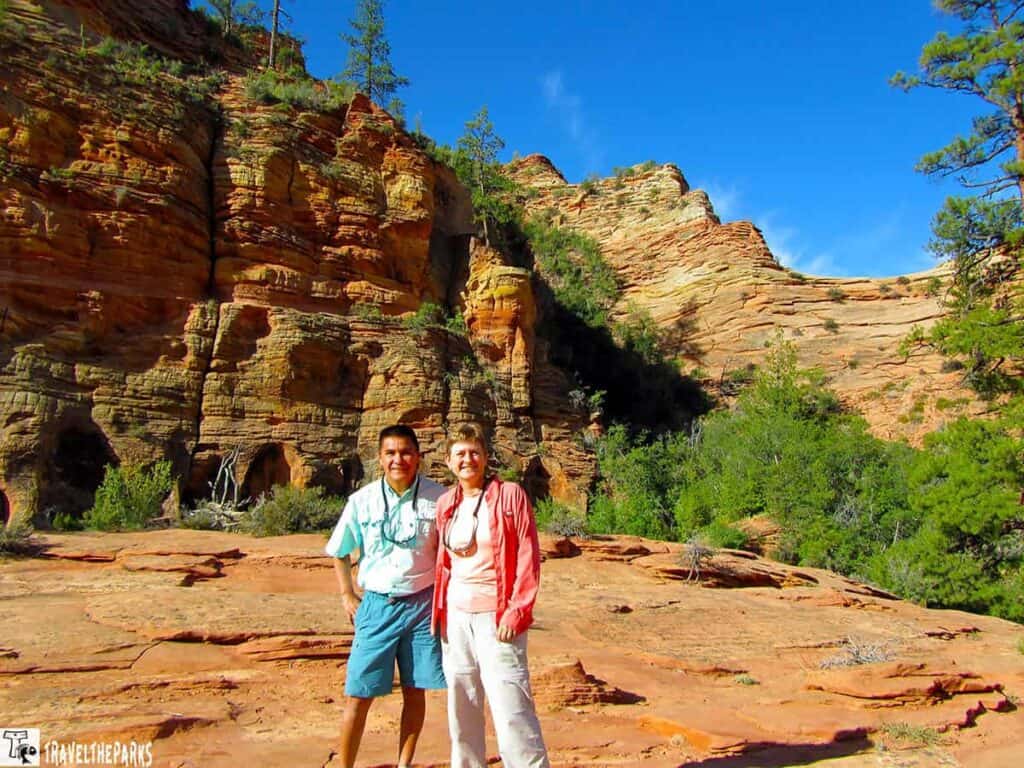
An interesting fact is that Gilbert Stanley Underwood designed the lodge in the 1920s. Although the original Zion Lodge was destroyed by fire in 1966, the rebuilt lodge now serves as the hub for most activities within the park.
PRO Tip: If you want to maximize your time and avoid the shuttle lines, staying at the Zion Lodge is the best move. It’s the only in-park lodging, and it gives you direct access to some of Zion’s most iconic trails, like Emerald Pools and The Grotto. Plus, waking up surrounded by red cliffs is an experience in itself.
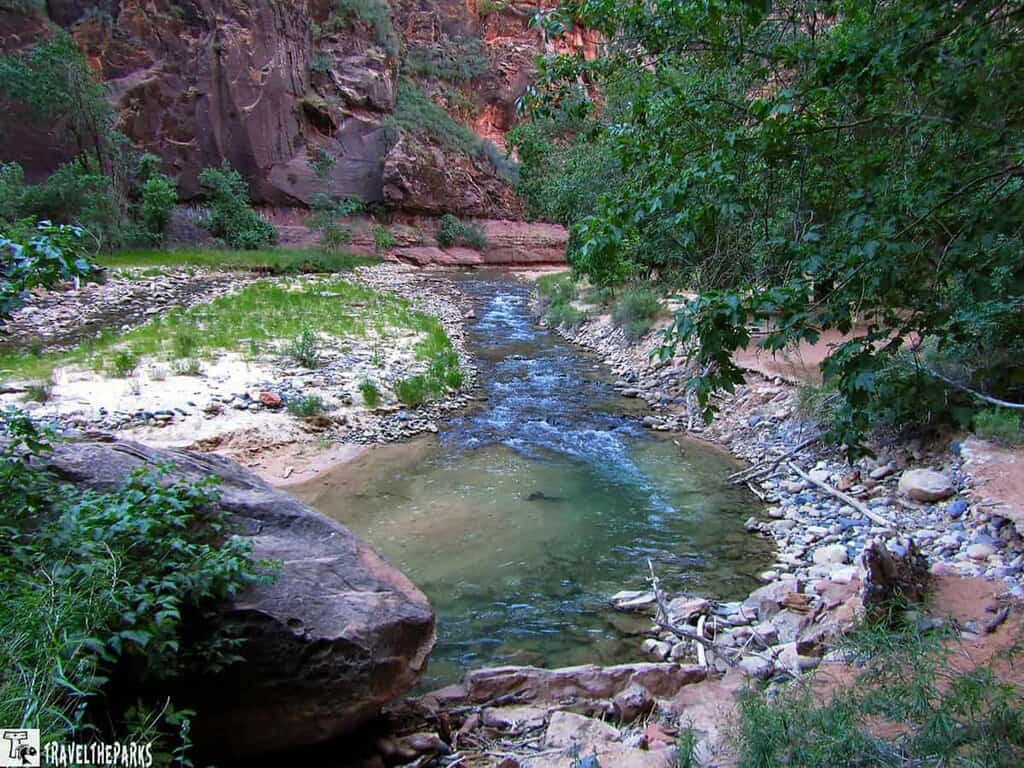
Perfectly Situated Zion Lodge Rooms: Enjoy Nature’s Beauty in Comfort and Serenity
The lodge’s hotel rooms are well-appointed and spacious, featuring comfortable beds, modern amenities, and private bathrooms. Lodge rooms have two standard double beds, a bathroom, refrigerator, microwave, and single-serve coffee maker (with a great selection of coffee and teas). The lodge doesn’t provide single use toiletries for guests, but has large bottles affixed to the walls. Environmentally, this makes sense. We had a balcony that faced the massive cliff face. On the plus side, the windows were nice to open, letting the cool night air into the room.
When we first arrived, the temperatures were in the high 90s, but even in June, the evenings in the park cool comfortably into the low 70s. Sitting out on the veranda was the perfect way to unwind. And when the sky darkened, the stars put on a show—glittering and twinkling in a way you can only experience far from city lights. It was the kind of night that makes you linger a little longer, just soaking it all in.
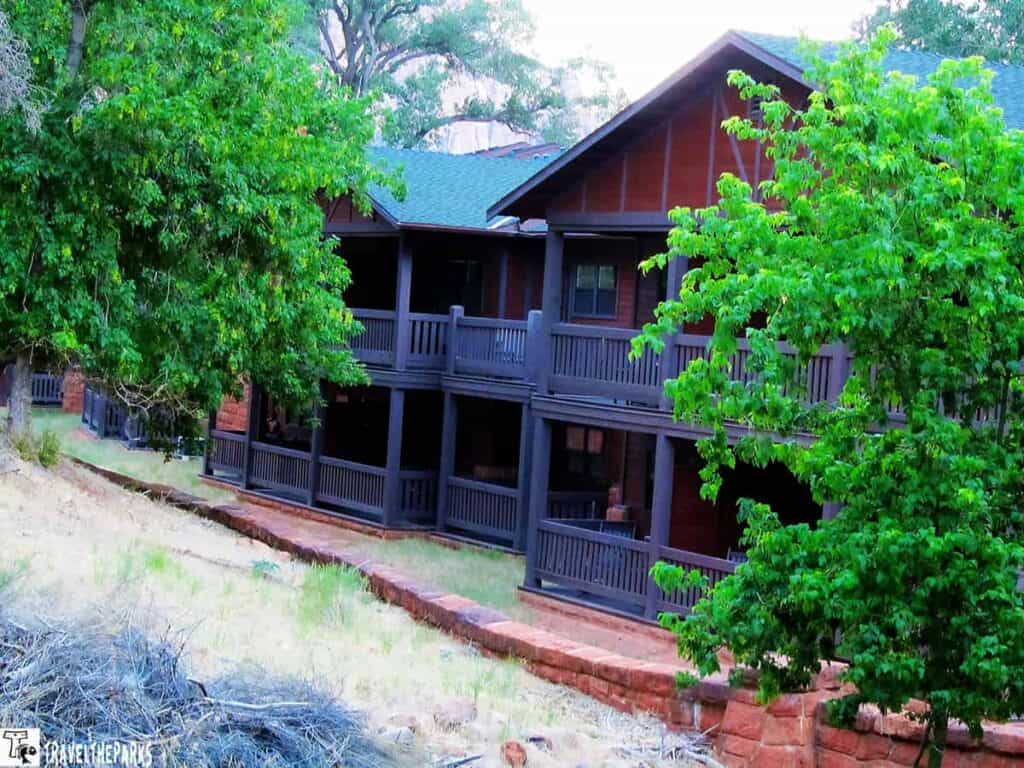
In front of the Zion Lodge, there is an open field where people gather to rest or eat lunch or ice cream. It is truly a wonderful experience. The grounds are lovely and incorporate the local flora and fauna. The lighting at night is dark it only adds to the natural quality of the lodge. Bring a flashlight, for safety.

The Watchman Building at Zion Lodge: A Serene Retreat Amidst Nature’s Majesty
Still on Eastern Standard Time, I was up early the next morning and found myself on the balcony, wrapped in a jacket, watching a mule deer nibble on a sage bush near the canyon wall. At 40 degrees, the air felt brisk—especially for this Florida girl—but it was a welcome change from the desert heat we’d felt the evening before. The crisp morning chill was invigorating, and the quiet stillness of the canyon only made the moment more magical.
As the sun began to rise, light spilled over the cliffs, painting them in gold and amber. It was one of those awe-inspiring Zion mornings you never forget.
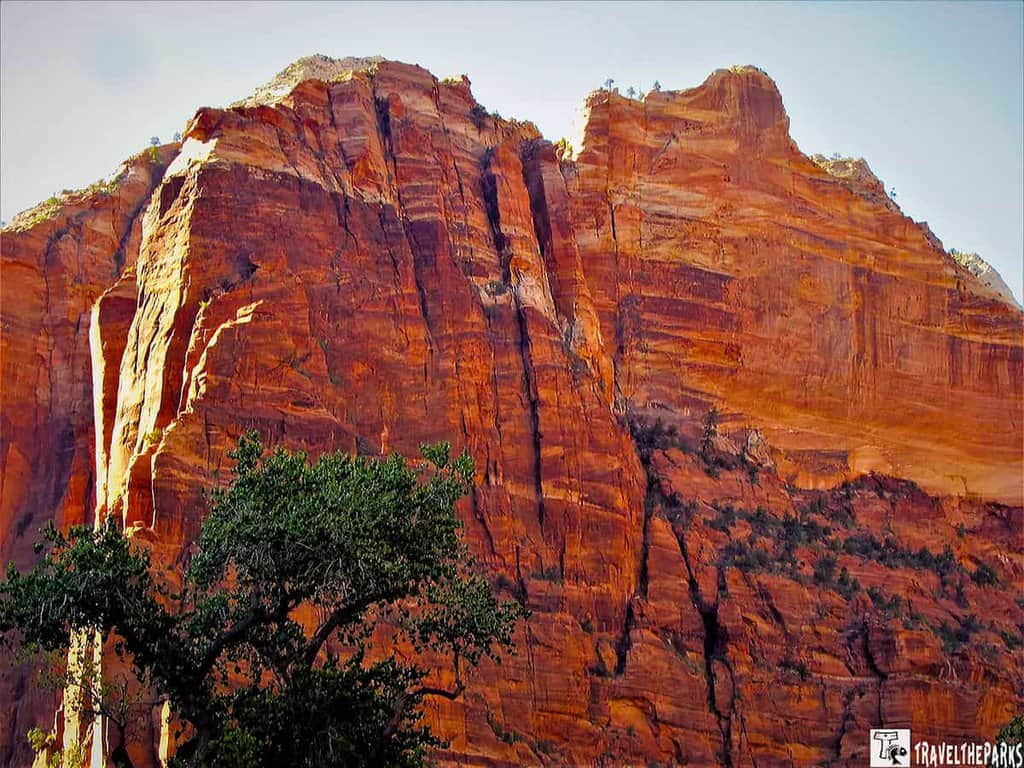
Zion National Park Dining Room Options: A Culinary Journey Amidst Nature’s Splendor
If you plan to spend the entire day in the park, be sure to consider your dining options. Zion does not offer that many options for meal selection. I would suggest driving into Springdale. Springdale offers a better selection of restaurants. Alternatively, if you do not want to drive to the restaurant, take the shuttle. Many restaurants are at the different Springdale shuttle stops.
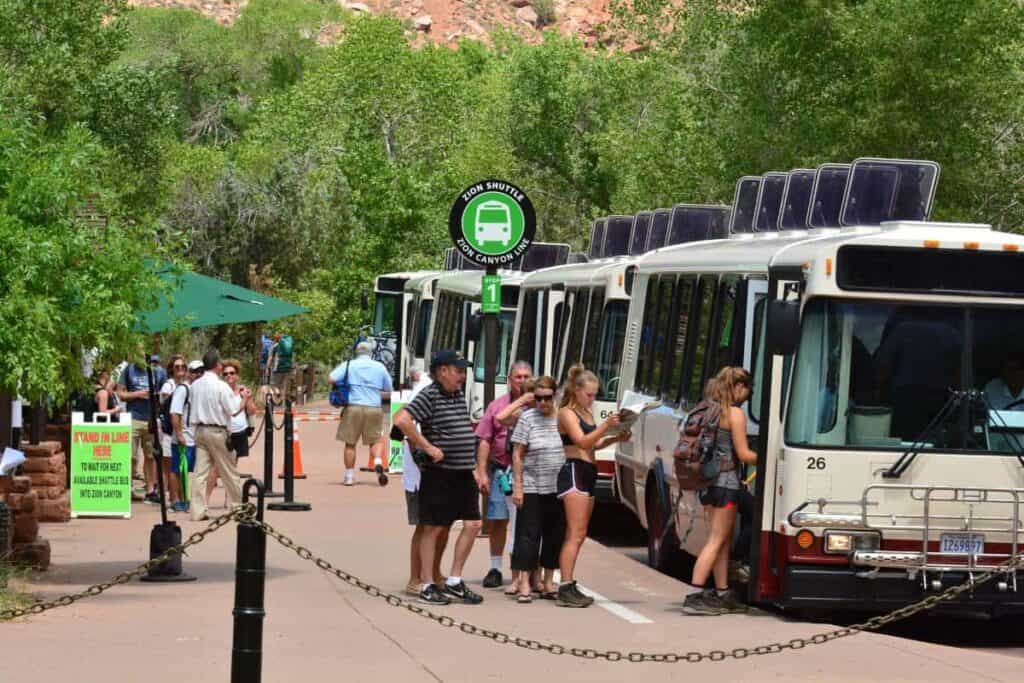
Red Rock Grill at Zion Lodge: Savoring Southwestern Flavors
We had breakfast in the dining room, also called the Red Rock Grill.The buffet was well-stocked with freshly made French toast, pancakes, breakfast potatoes, and oatmeal. It also offered both unsweetened and sweetened yogurt, fresh fruit, and granola. Ask the server for a window seat so that you can eat while looking out through the large picture windows, enjoying views of the canyon. The breakfast was fabulous!
I strongly recommend making dinner reservations—be sure to call 60 to 90 days in advance, as there’s usually a long wait for one.
Luckily, we previewed the menu on the website, so that compelled me to make a dinner reservation before arrival. I had a small portion of bison meatloaf, with a demi-glacé, garlic mashed potatoes, and carrots and broccoli. The meatloaf was great! Hubby ordered the bison burger and stated it was delicious!! Overall, the dining room food was good, not to mention the outstanding view out the windows.
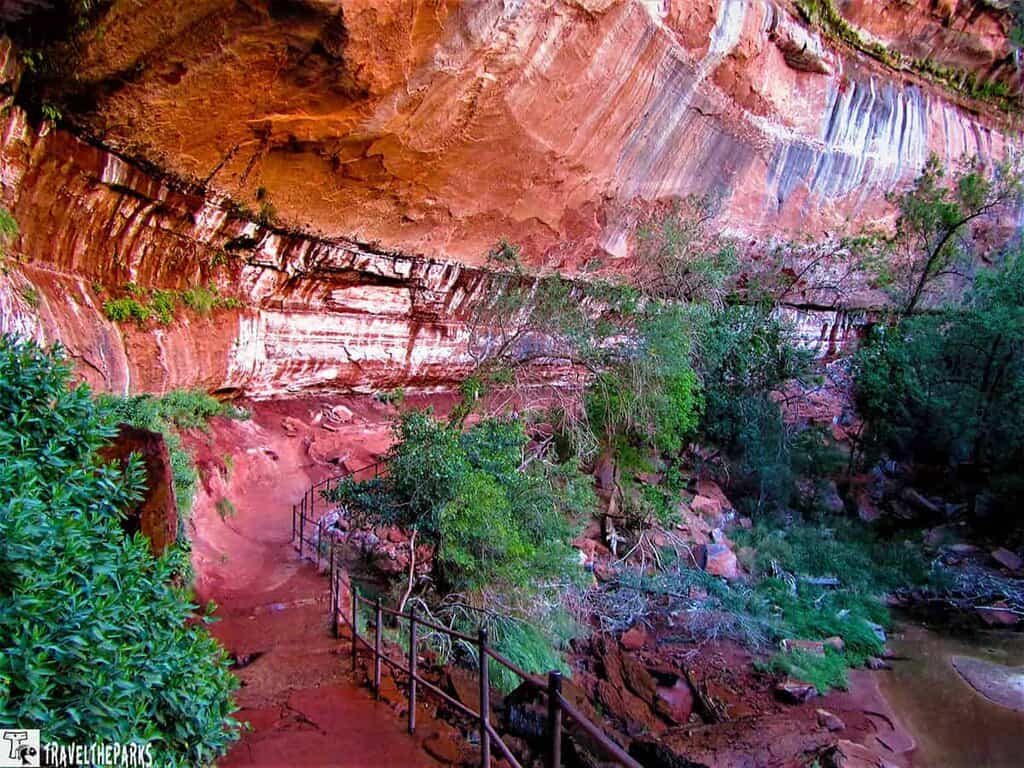
Castle Dome Cafe at Zion Lodge: A Culinary Oasis in the Heart of Zion National Park
This café offers takeout or dines in options at the Zion Lodge complex. The café predominantly offers hamburgers, chicken sandwiches, and salads with chips, fries, and soda. There are two order areas, a grill bar and an area for coffee and smoothies. The patio outside features a small bar serving craft beers and coffee. Seating is available on the outdoor patio—if you can find a spot! It’s often busy and crowded, but the view is absolutely stunning. The service was quick, and they bring the food right to your table. Considering how many people they serve, everything arrived promptly, and the food was tasty. Oh, and did I mention the view is amazing?
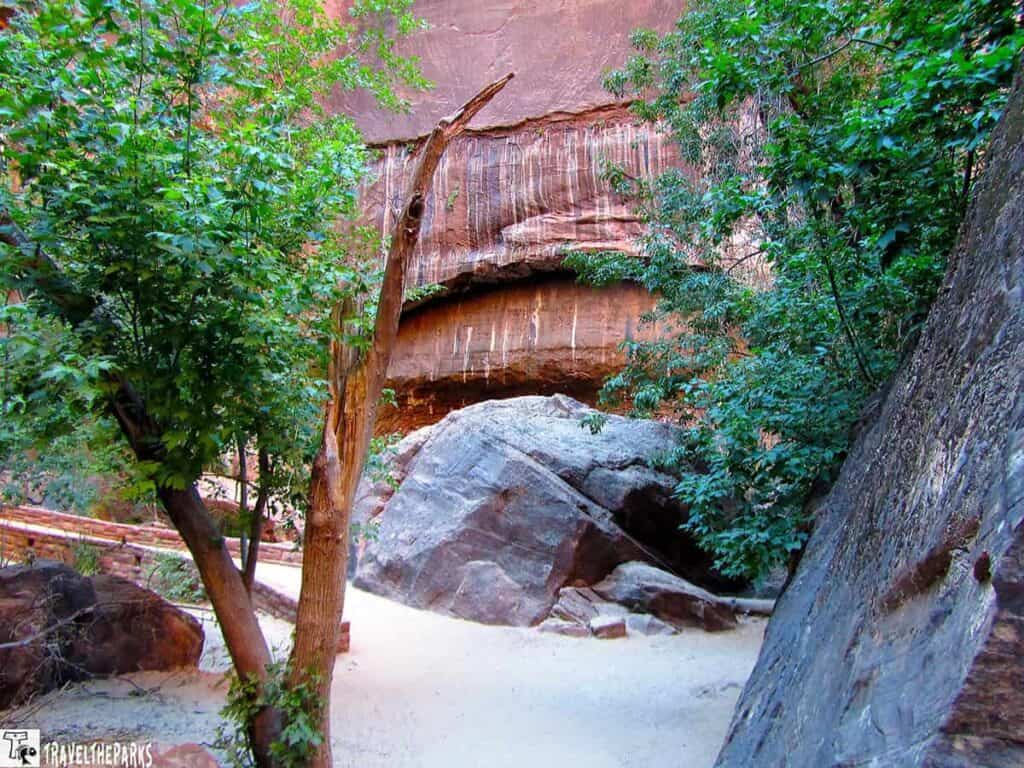
Bit & Spur Restaurant & Saloon-in Springdale, Gateway to Zion National Park
Springdale is the largest town outside the park. The shuttle buses run on a regular schedule from the Zion Visitor Center. If you are spending more than a day in Zion National Park, take sometime to eat at a restaurant and walk the gift shops. We ate one night at the Bit & Spur Restaurant & Saloon. It has interesting menu choices with a South West/Mexican slant, and the prices are very reasonable. The margarita menu was perfect after a hot day on the trails. The atmosphere here is delightful. We sat outside and enjoyed the hummingbirds jostling for nectar on the many feeders placed on the veranda. We watched a fox on the lawn hunting in the twilight, very entertaining. The décor inside the restaurant is an odd mix of local wood scrap sculptures and macabre paintings.
The waitstaff was friendly and courteous. Our server was very attentive and gave excellent suggestions about what she thought was best. Other staff members stopped by to check on us and brought the food out quickly. The dining area was sparse when we arrived, although it filled quickly.
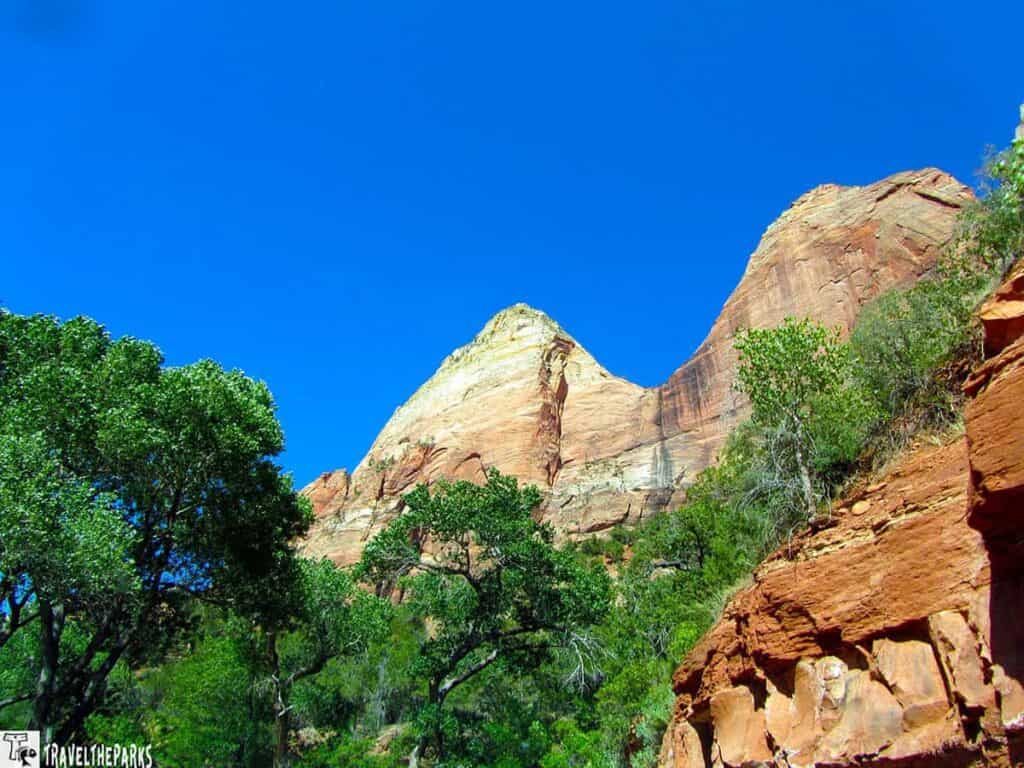
Southwestern Delights be What’s for Dinner
I had the fish tacos. The fish ( again super fresh) was cooked perfectly. The tortilla shells on the tacos were crisp and not soggy, which just enhanced the fish and the salsa.Barry had the Flautas Verde. We were used to flautas being small-diameter rolled tortillas with some filling, but at Bit & Spur, they make theirs about 2 inches in diameter—more like a burrito—and then fry them. The flautas came with rice and beans on the side. He said the Carnitas Flautas Verde was absolutely mouth-watering!
They presented the food nicely on the plate. I would recommend the food here to anyone who likes good Tex-Mex. A simply sublime dining experience! A 7-star experience on a 5-star scale!
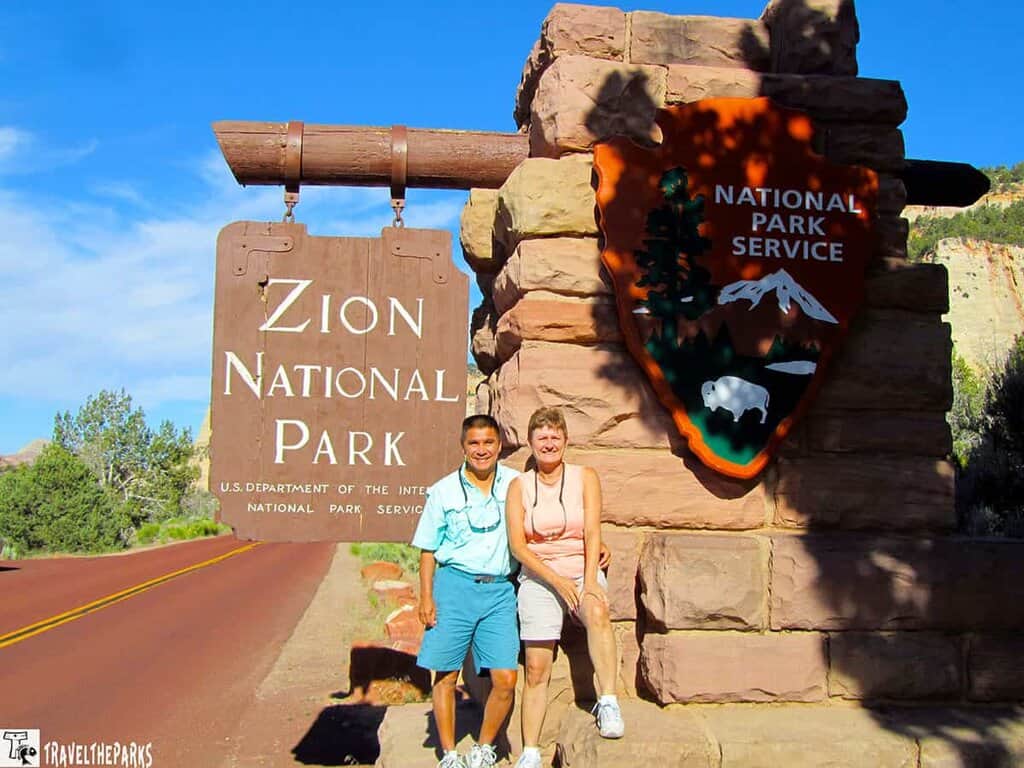
A Perfect Day in Zion National Park: What to Include in Your Itinerary
Zion National Park, a breathtaking wonderland of canyons and red cliffs, offers a plethora of natural treasures to explore. Spending a day in this majestic landscape requires thoughtful planning to make the most of your visit. Here’s a carefully curated itinerary to help you experience the best of Zion in a day, from scenic hikes to awe-inspiring viewpoints.

A Stop at the Zion Canyon Visitor Center: Gateway to Adventure and Information
Our first stop in national parks is always taking time to stop in at one of the visitor centers. The Zion Canyon VC is near the west entrance to the park and is the starting point for the free shuttle service. There is also the Kolob Canyon Visitor Center. We always add the VC as our first stop on any park itinerary. If you are not lodging in the park, leave your car and pick up a shuttle, visit the large bathroom facility outside the main building, or just rest and have a picnic.
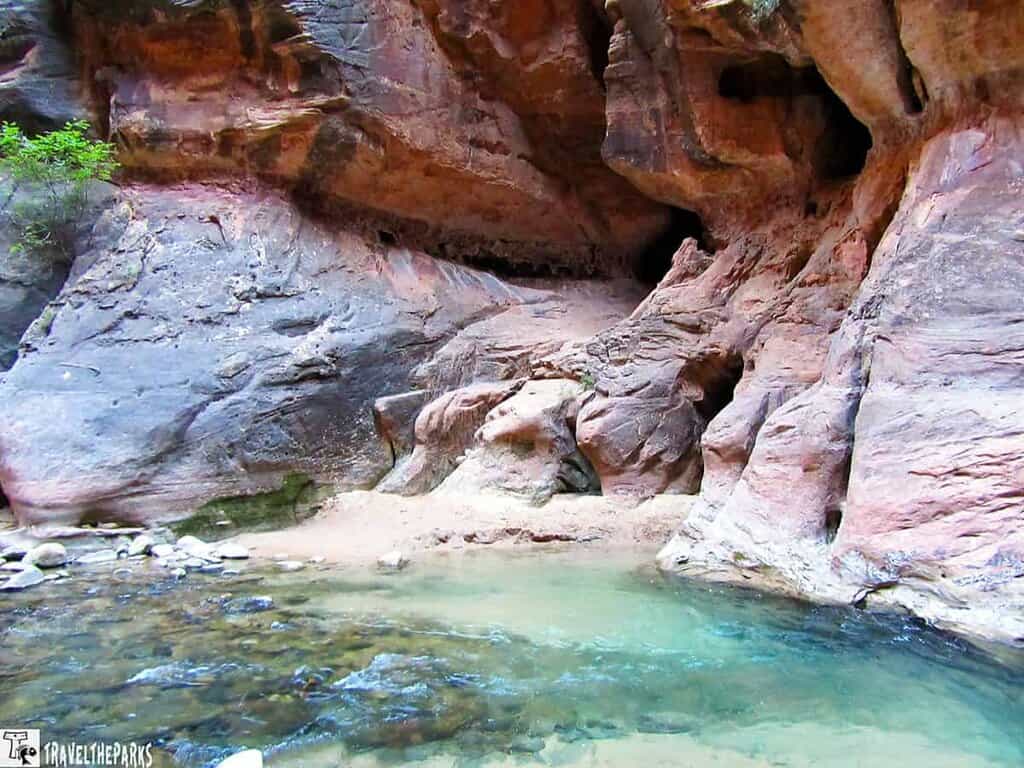
There are a lot of interactive exhibits inside and outside the center that tell about the park and its history. There is also a large gift/bookstore that you can purchase T-shirts, posters, and other souvenirs. The rangers inside were very helpful in dispensing information about hikes, shuttles, and general information about the park. This is where one can get their National Parks passbook stamped.
If you have children in your group, encourage them to take part in the Junior Ranger Program, available at the visitor center. This program offers fun and educational activities to help young visitors connect with the park and earn a Junior Ranger badge.
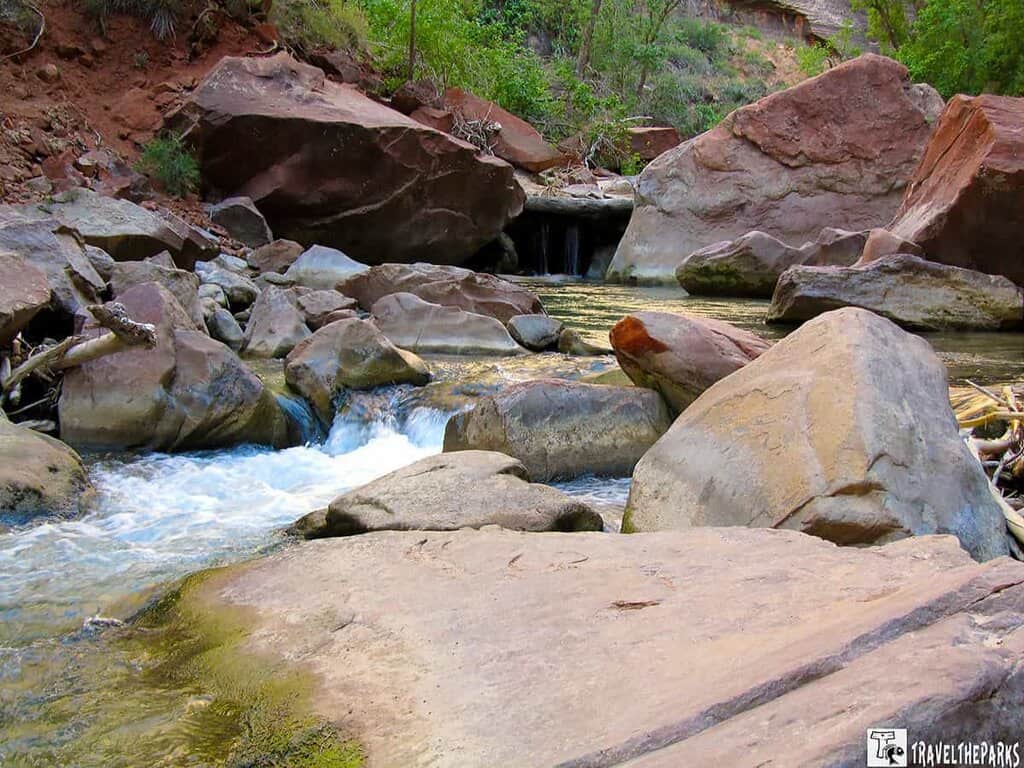
Zion Human History Museum: Unraveling the Stories of the Past in a Timeless Landscape
If you are interested and want to learn about historical, cultural or geological data, go to the museum. It is close walking distance of the shuttle Stop#1. They have a 22-minute video on the park’s history. The Zion Human History Museum offers a captivating journey through time, unveiling the rich tapestry of human stories woven into the park’s ancient terrain. There are exhibits on Native American culture, pioneer life, and the effect of water on the formation of Zion. Best of all, it is free.
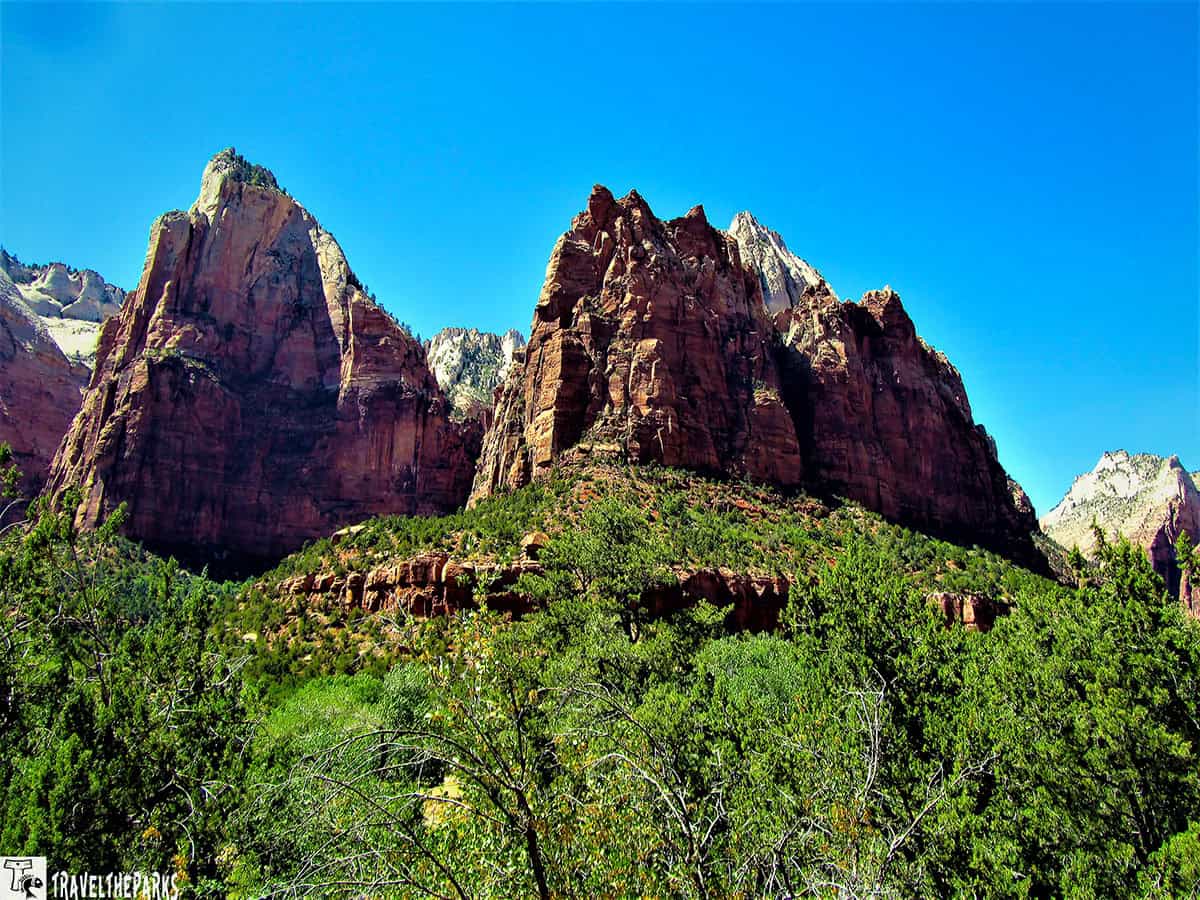
Navigating Zion National Park: Shuttle Stops and Spectacular Hiking Trails
In the summer months, they do not permit cars to drive through Zion Canyon. The only exception is for those staying at the Zion Lodge. If you stay at the lodge, you receive a special permit to drive the canyon road. If your route includes any of the sights along the canyon road, you will spend some time on the shuttle. There are two shuttle routes in the Park.
- The Zion Canyon Shuttle connects the Zion Canyon Visitor Center to stop at nine locations on the Zion Canyon Scenic Drive.
- The Springdale Shuttle will take you to the park’s pedestrian entrance near the Zion Canyon Visitor Center. You may get on and off as often as you like. For a map of the shuttle stops, click here.
It is advisable to refill your water bottles with cold purified spring water at the refill stations either at the Lodge or at the Visitor’s Center before catching the shuttle bus.
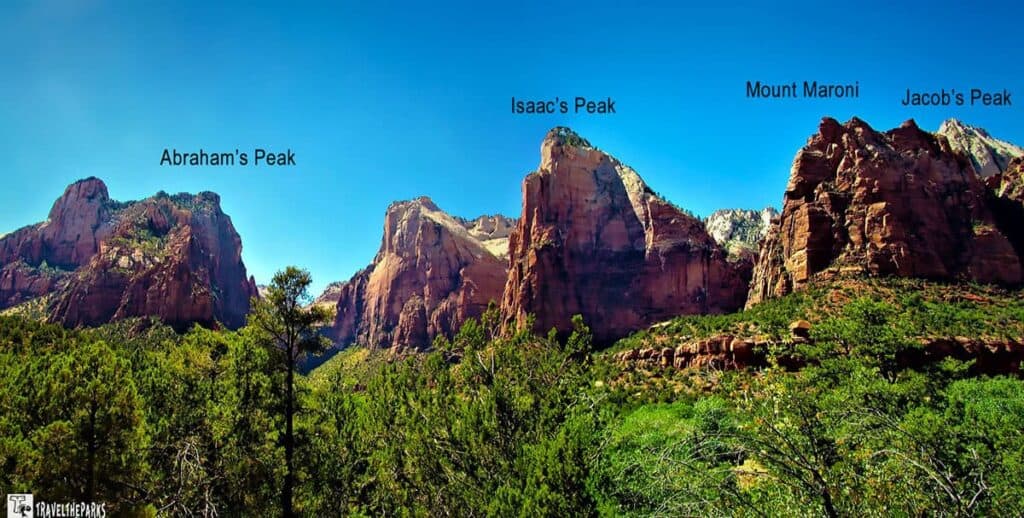
Court of the Patriarchs (Stop 4): Where Majestic Spires Tower Over Zion
At Stop 4 on the Zion National Park shuttle route, you’ll find yourself in the presence of towering sandstone monoliths known as the Court of the Patriarchs. If you are interested in folklore or history, the interpretive sign is worth reading. They named the mountains after figures from the Old Testament: Abraham, Isaac, and Jacob. Mount Moroni sits in front of Jacob and is named after the Book of Mormon prophet that appeared to Joseph Smith. A Methodist minister named Frederick Vining Fisher in 1916.
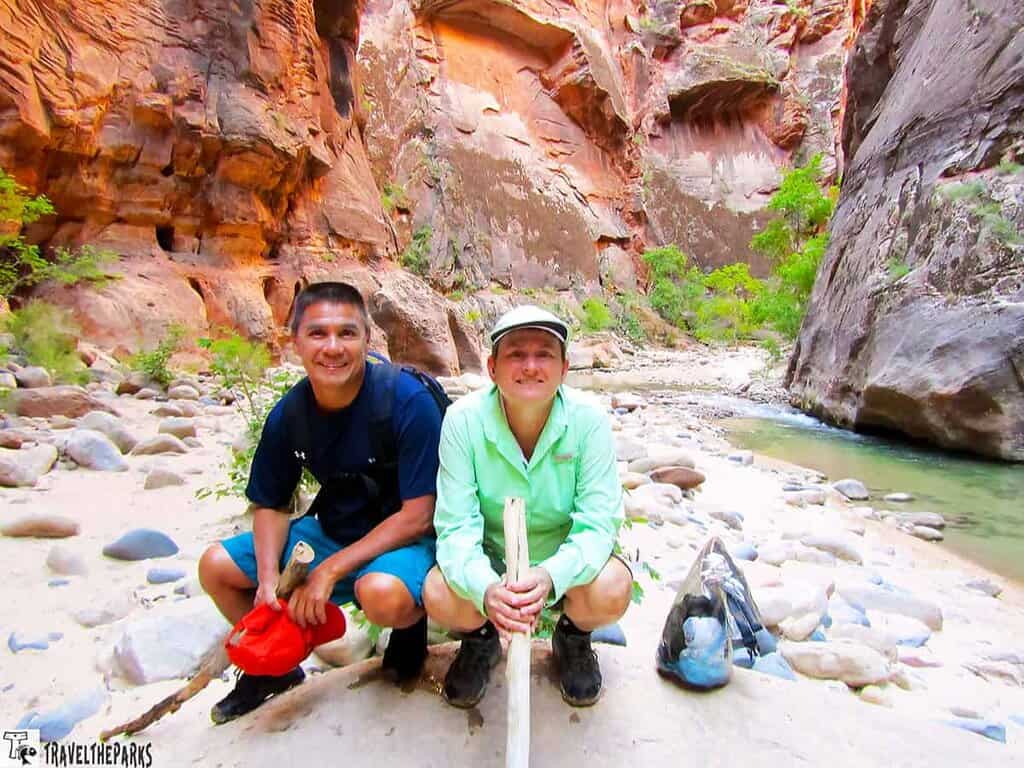
The peaks are Abraham Peak at 6890 ft., Isaac Peak at 6825 ft., Mount Moroni at 5690 ft., and Jacob Peak at 6831 ft. The Sentinel is also visible from the lookout at the top of the trail. As a teacher, I love learning about the geology of the parks. The sandstone cliffs of the Court of the Patriarchs are part of the Navajo Sandstone formation, which holds millions of years of geological history within its layers.
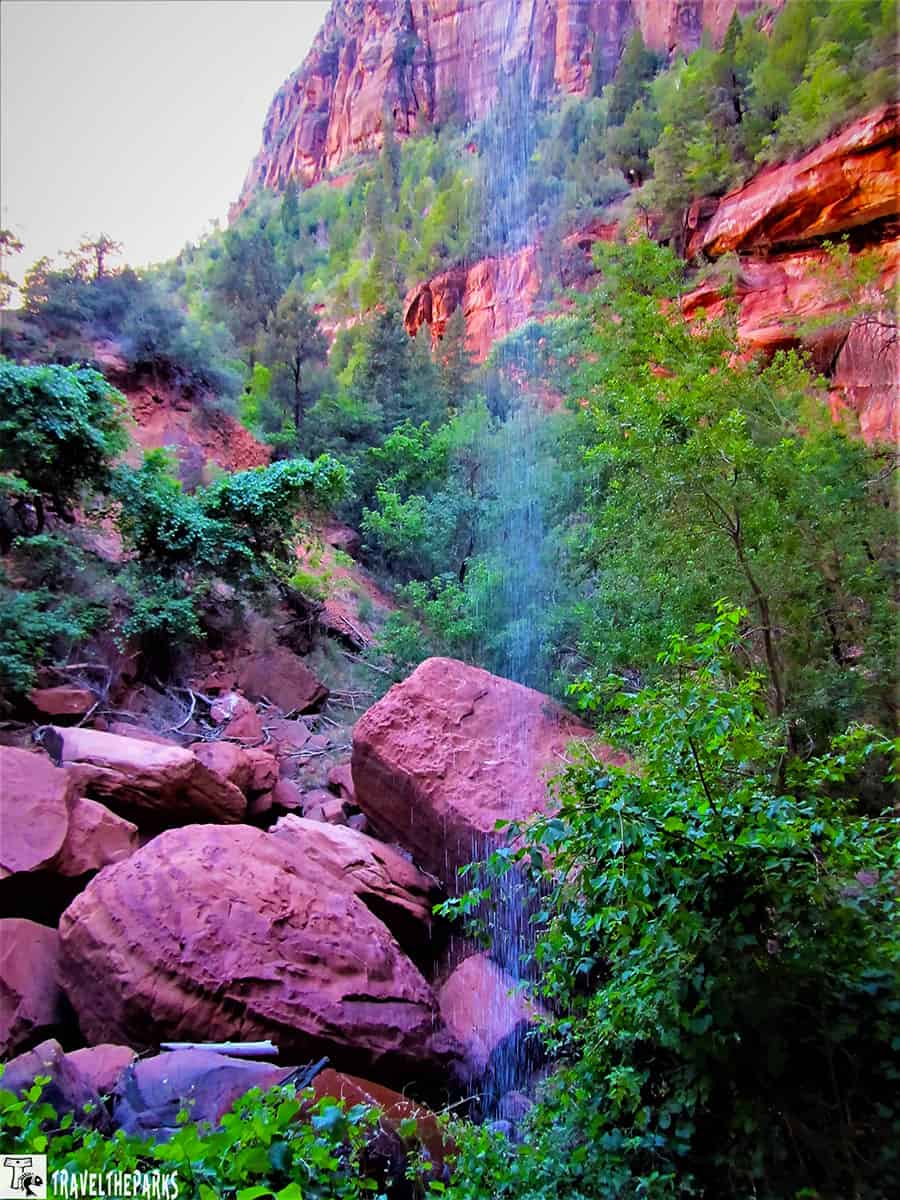
Emerald Pools (Stop #5): Tranquil Beauty Amidst Zion’s Waterfall Canyons
If you only have one day on your itinerary, I would suggest spending at least a few hours trekking the Emerald Pools Trail. This iconic destination offers a range of hikes, each leading to a different level of the pools, showcasing the beauty of cascading waterfalls and serene emerald-hued basins. The Emerald Pools are divided into three distinct levels: Lower, Middle, and Upper Emerald Pools, each offering a unique and captivating experience.
The trail begins across the bridge over the Virgin River. Super easy trail for families or those who do not hike. If I were a newbie to hiking, I would add this as my starter hike to my itinerary for Zion National Park. The trail is paved and easily accessible to small children and strollers.

An easy and family-friendly hike leads to the Lower Emerald Pool. At the lower pool, the canyon opens up into an immense amphitheater of red rock. Water trickles down and over the rock face, creating the pool below. We found it to be a perfect spot for a tranquil stroll and a refreshing respite from the canyon heat.
The middle-and upper sections became more challenging and required a bit more effort. Along the trail, we spotted plenty of wildlife, including rattlesnakes, wild turkeys, and deer.
The Grotto-Stop #6: Gateway to Angels Landing – A Trail of Thrills and Breathtaking Vistas
At Stop #6 on the Zion National Park shuttle route, The Grotto serves as the gateway to one of the park’s most thrilling and iconic hikes – Angels Landing. This challenging yet rewarding trail takes hikers on an unforgettable journey through sheer cliffs and narrow ridges, leading to awe-inspiring panoramic views of Zion Canyon. The Grotto marks the starting point for the famous Angels Landing hike, which is a 5.4-mile round-trip. We began the trail tackling a series of switchbacks known as Walter’s Wiggle. For this landlubber, it was an invigorating climb. These 21 steep switchbacks zigzag their way up the canyon walls, providing a challenging ascent to higher elevations. After the switchbacks, we reached Scout Lookout, a prominent viewpoint that presents a breathtaking view of the canyon below. This is where I stopped. Hubby, however, continued on (we did not need a permit in 2013).
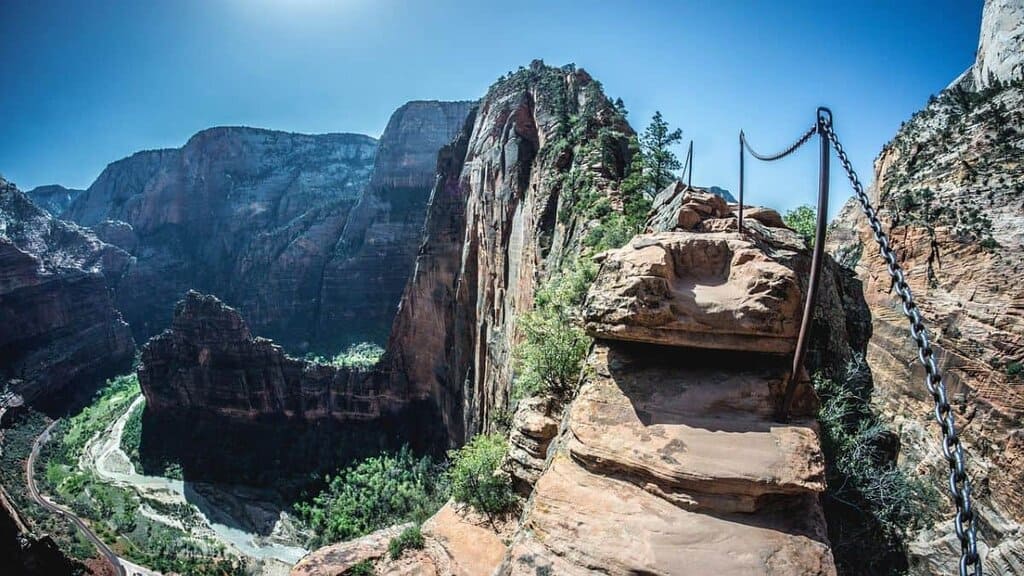
Perhaps the most famous—and most heavily traveled—trail in the park, a visit to Zion wouldn’t feel complete for many without a trip to the top of Angels Landing. The rewards are incredible if you make it to the summit. As you navigate the exposed cliffs, gripping the chains for support, it’s easy to see why Angels Landing is considered one of the most exhilarating hikes in the world. My advice? Stay in the park and rise early to catch the first shuttle of the morning. For most visitors, this hike is the top item on their Zion National Park itinerary.


Weeping Rock (Stop #7): A Glimpse of Nature’s Tears and Hanging Gardens
Stop #7 on the Zion National Park shuttle route took us to one of the park’s most magical places: Weeping Rock. This special geological site has a natural spring that gradually flows through layers of Navajo sandstone. As we walked up the short, steep path—less than a quarter mile long and rising about 100 feet—we soon found ourselves in a green, shaded area. The lush green alcove contained ferns, moss, and other plants that loved wet environments. They grow well in the steady mist that surrounds the alcove. The cliffside supports these lovely hanging gardens, which are watered by small, mineral-filled streams. These streams have shaped this natural amphitheater over thousands of years.
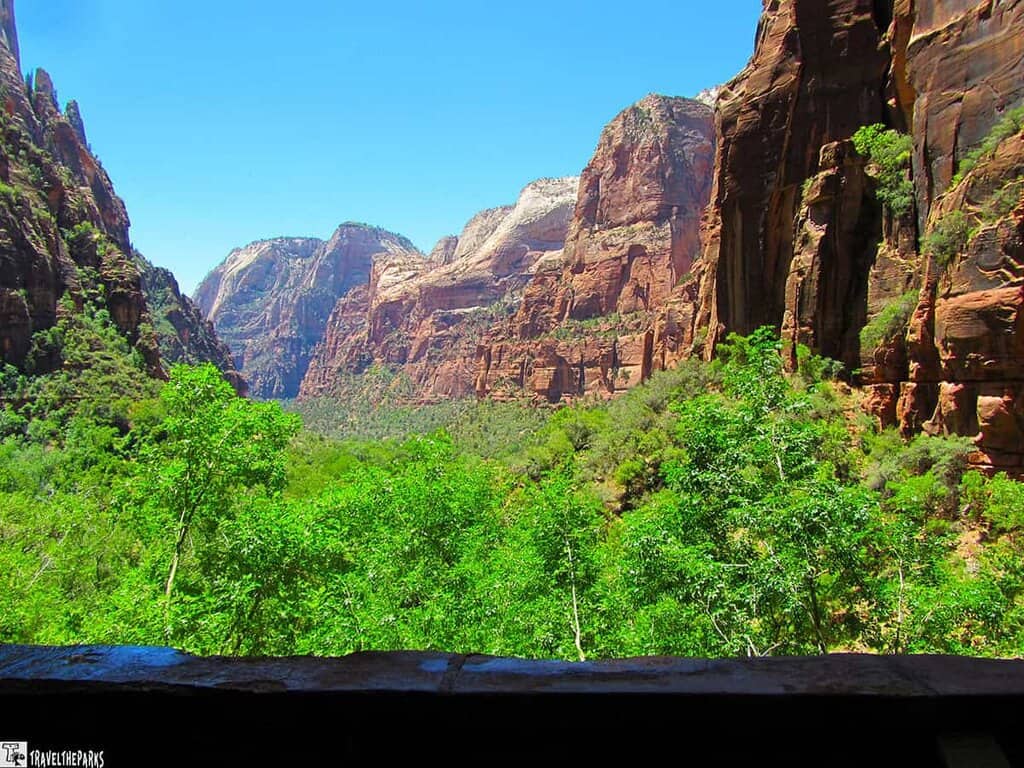
Sweeping views of Big Bend, framed by sheer canyon walls and the winding Virgin River below, awaited us just beyond the short stone wall at the edge of the alcove.
This trail is short but sweet—a perfect addition to any Zion itinerary, especially if you’re looking for a quick, scenic, and sensory-rich experience.
Big Bend (Stop #8): Where Nature’s Majesty Unfolds Along the Virgin River
Stop #8 on the Zion National Park shuttle route brings you to Big Bend, a picturesque location along the Virgin River where nature’s majestic beauty unfolds in all directions. From Weeping Rock there are sweeping views of Big Bend. Big Bend is where the Virgin River winds around the Organ, before continuing towards the lower canyon. There are spectacular views of the Great White Throne, rising over 2400 feet above the canyon floor. A rather impressive monolith composed of white sandstone. Here, you can also access the Grotto Trail.
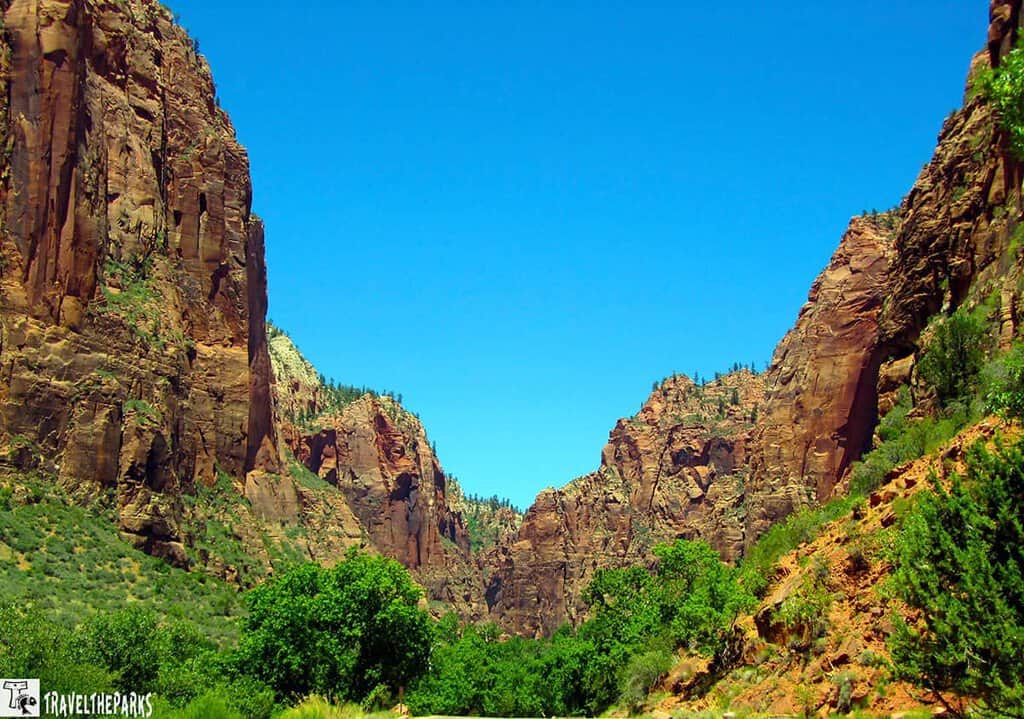
Riverside Trailhead – Temple of Sinawava (Stop #9): Gateway to The Narrows
While most will add Angel’s Landing to their top trails to hike, I feel the Narrows is one that needs to be on everyone’s schedule. Shuttle Stop-9 will give you access to the Narrows. They occasionally call The Riverside Walk the Temple of Sinawava. The slowly encroaching walls of the canyon surround the trail. It offers a small taste of the Narrows ahead. It begins at the Temple of Sinawava, at the far end of the normally accessible portion of Zion Canyon. The Riverside Trail is a paved, family-friendly path that meanders alongside the Virgin River.
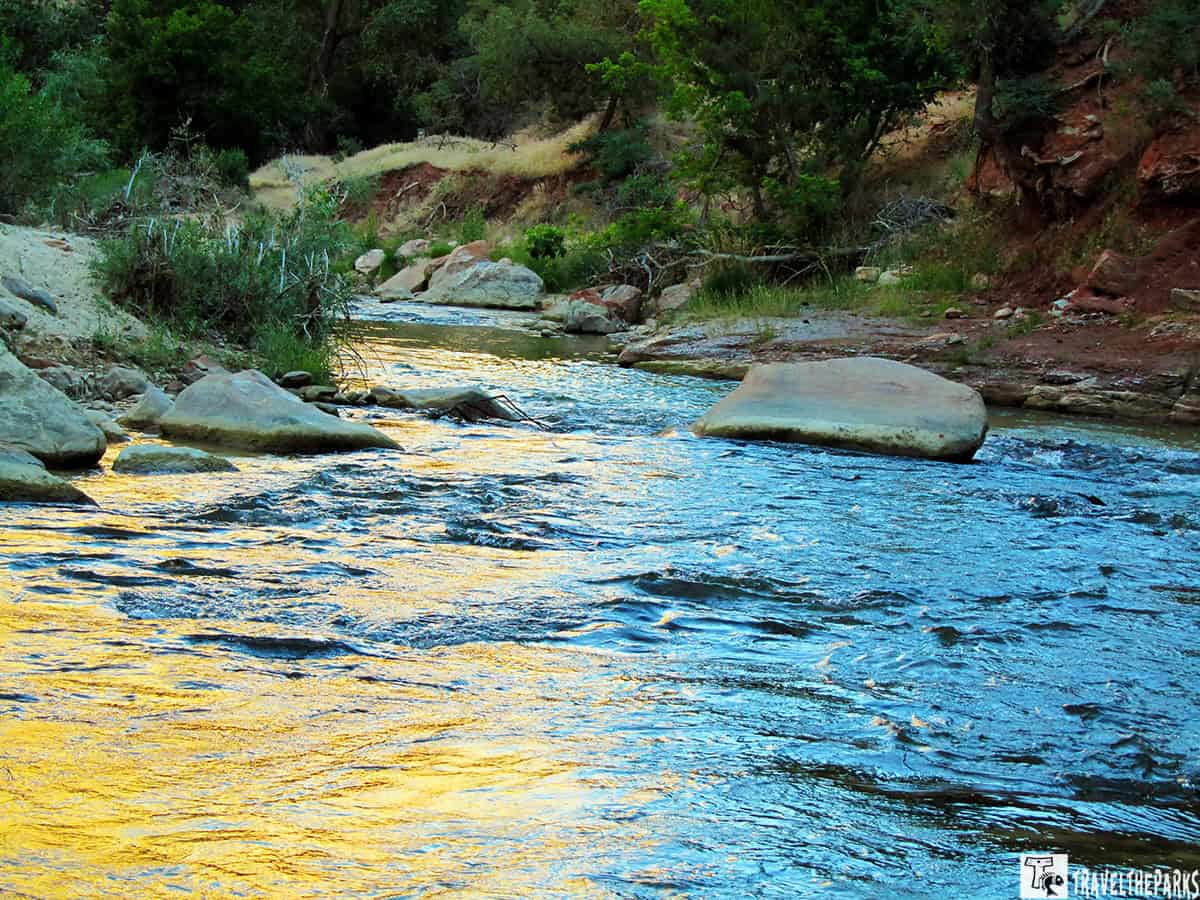
Large cottonwood trees line the trail, providing a comfortable, shady walk throughout. The soothing sounds of the North Fork of the Virgin River create a wonderful ambiance that perfectly complements the trail. Water draining down the slot canyon walls nourishes the hanging gardens along the sloped cliffs.
At the end of the trail, the Narrows hike begins as the slot canyon opens up, inviting hikers to wade into the water. Spending time in the Narrows offers a truly unique perspective of Zion National Park. For us, it was a surreal journey through a water-carved canyon, creating an unparalleled connection to the raw essence of Zion. The narrow slot canyon offers a hiking experience unlike any other. In our opinion, the Narrows is an absolute must-do!
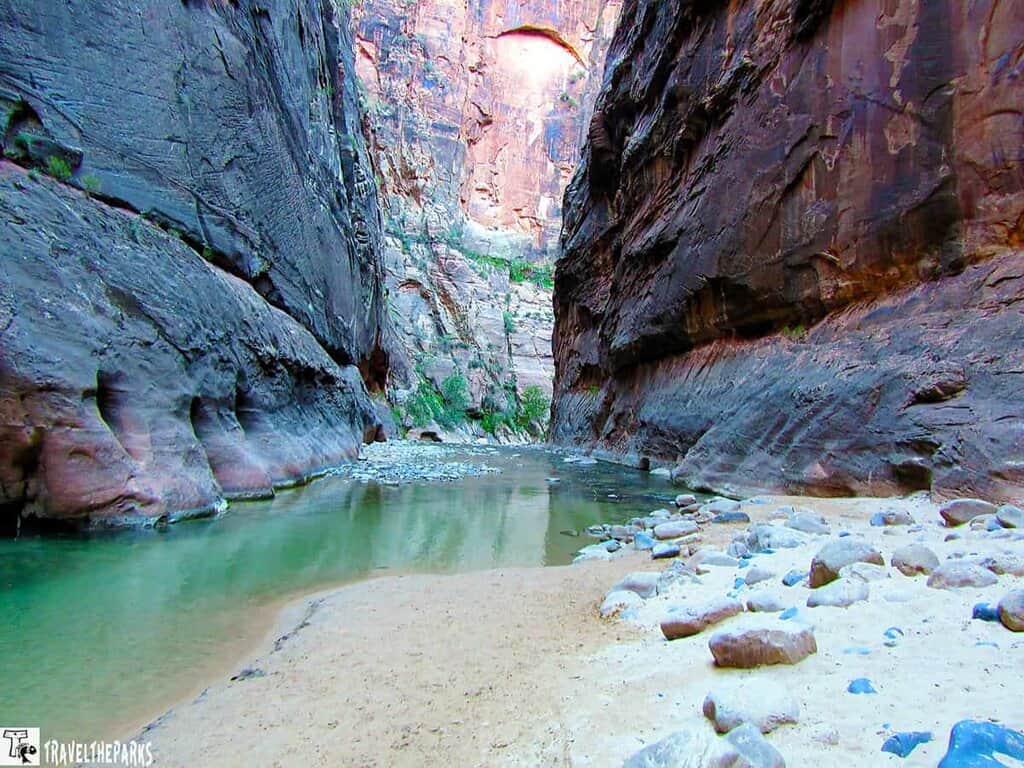
Exploring Mount Carmel: The Hidden Gem on the Backside of Zion National Park
We allocated two days to Zion National Park. Since we were travelling to Bryce Canyon, the road leads you to the backside of the park via the Mount Carmel Scenic Byway (UT 9) This area is very scenic, and I recommend adding this to your itinerary for Zion National Park. It is worth the journey.
The road leading from Zion Canyon to Mt. Carmel has many steep switch-backs with 5-6 hairpin turns. The sheer drop produces vertigo. It is amazing how beautiful the valley appears. The textures and colors of the canyon walls in the early morning light are amazing.
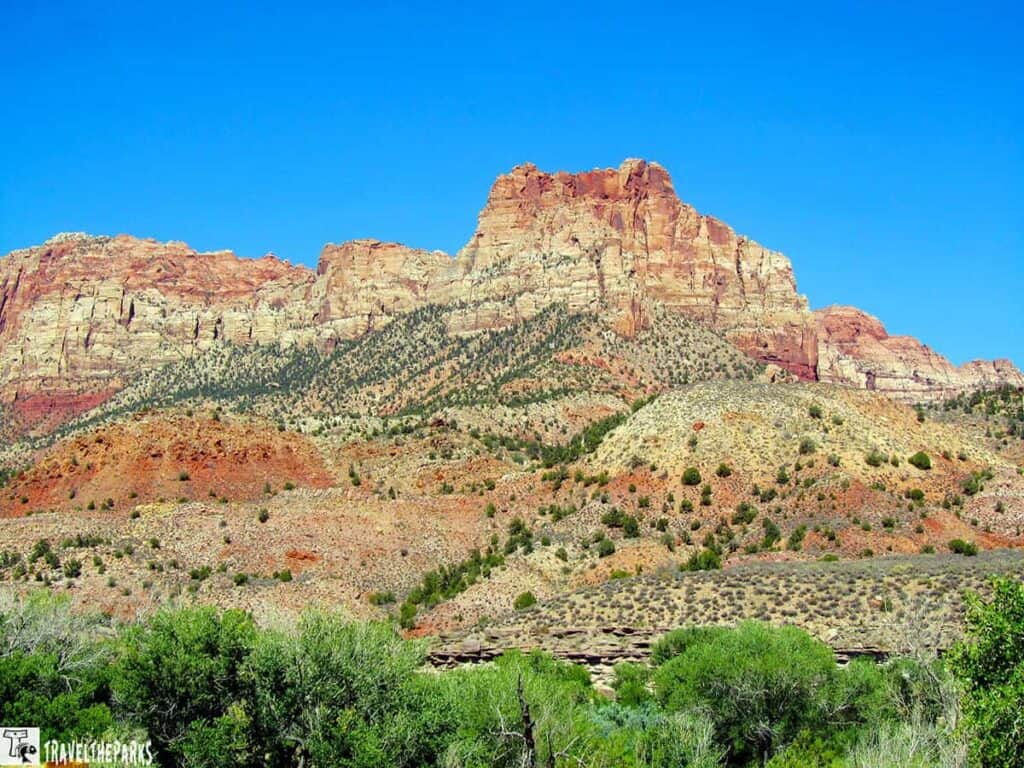
The Ingenious Engineering: Mt Carmel Tunnel in Zion National Park
The ambitious Zion-Mount Carmel Highway project began in 1927 under the direction of the National Park Service. We arrived at the east tunnel entrance just before 8:00 AM and didn’t have to stop. The park actually controls traffic through the tunnel by allowing one direction of traffic to drive through at a time. This is in order to give larger vehicles/motor homes easier passage through the tunnel by allowing them the opportunity to use both lanes if needed.

Note: there are size restrictions on vehicles that can pass through the tunnel; any vehicle that is 11’4″ high by 7’10” wide or larger will need a permit.
At the entrances, they collect the $15 permit fee. It covers two passages through the tunnel within seven days. Rangers provide traffic-control to allow the oversize vehicle to pass down the center of the tunnel, and this only happens during the day. The hours vary seasonally; starts 8:00 AM and last till 4:30 PM in winter and as late as 8:00 PM in summer. This means that everyone traveling either way through the east side of the park via the tunnel is subject to delays between those times. Vehicles over 13’1″ cannot use the tunnel. Bicycles and pedestrians cannot use the tunnel.
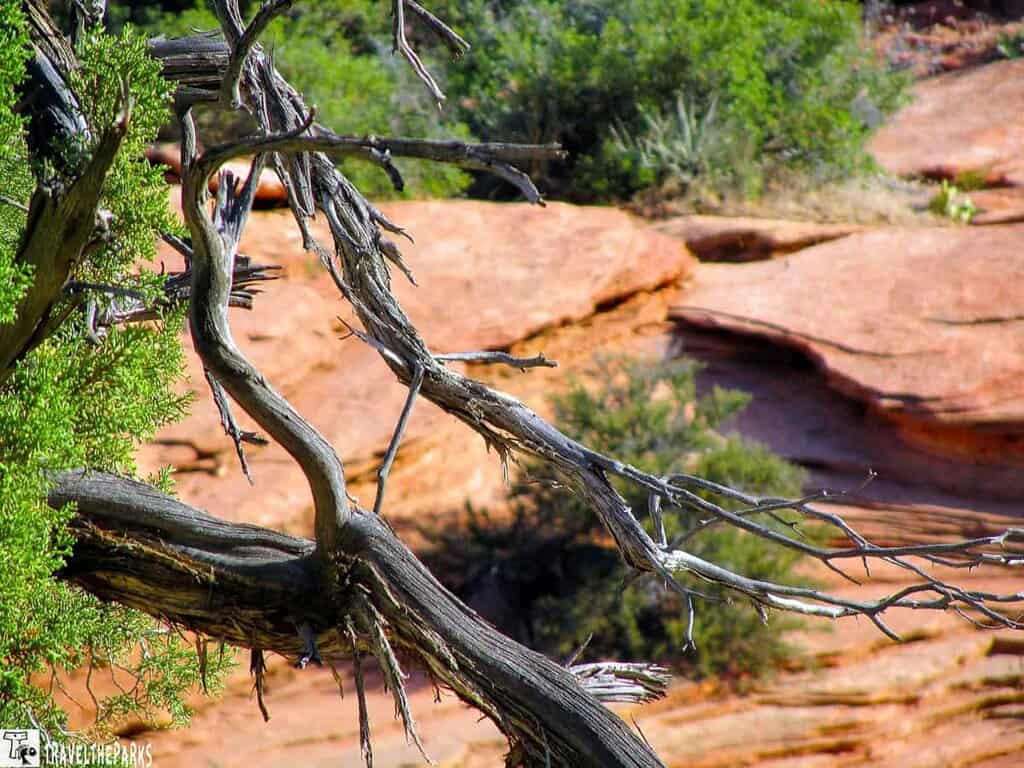
Discovering the Historic Mt. Carmel Tunnel: A Remarkable Feat of Engineering
The history of the Mt. Carmel Tunnel is one of ingenuity, perseverance, and the desire to enhance access and showcase the natural beauty of Zion National Park. Construction of the first-mile Zion-Mount Carmel Tunnel began in the late 1920s. They completed it in 1930. It was the longest tunnel of its type in the United States when dedicated on July 4, 1930. The purpose of building the Zion-Mount Carmel Tunnel (and the Zion-Mount Carmel Highway) was to provide direct access from Zion National Park to Bryce Canyon and the Grand Canyon.
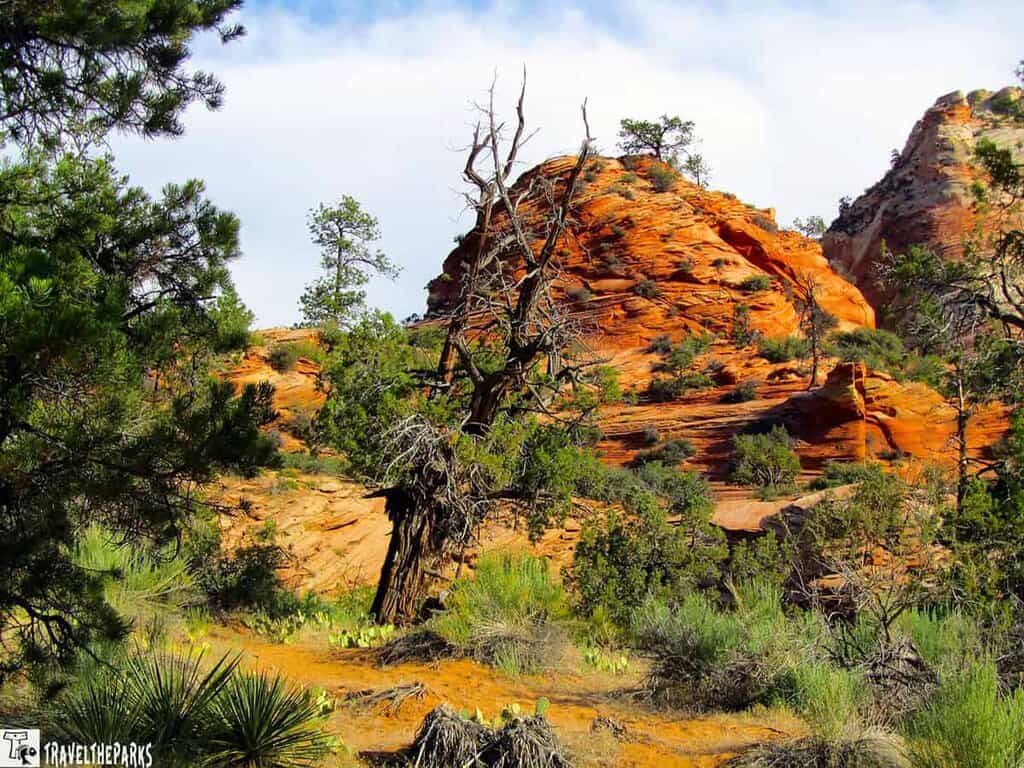
The tunnel is incredibly dark. Glimpses of the canyon through “windows” carved in the tunnel walls provide the only views. The six windows provide ventilation, light and spectacular views. Unfortunately, you cannot stop your vehicle and take pictures of the windows. This remarkable engineering marvel stands as a testament to the dedication and vision of those who undertook its construction.
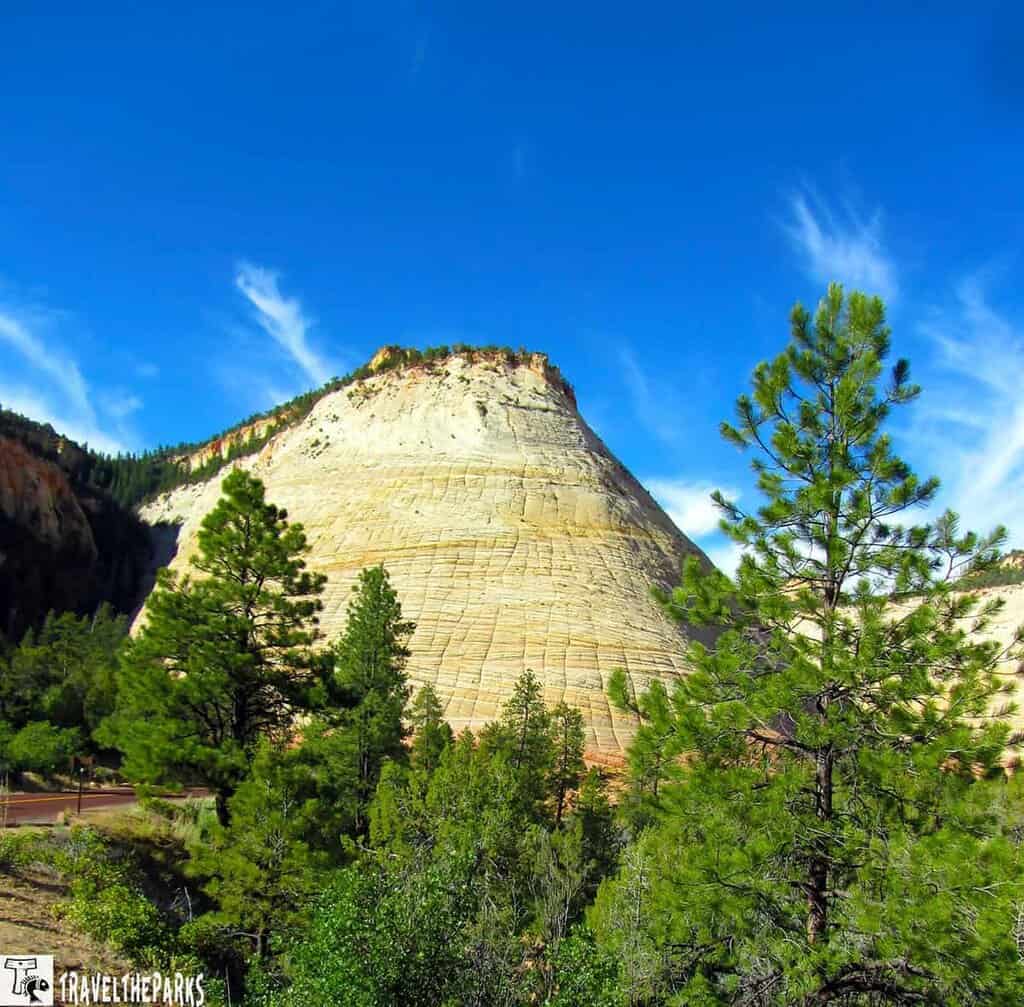
Checkerboard Mesa: A Geologic Masterpiece on the Backside of Zion
This geological landmark is a large formation along the Zion-Mount Carmel Highway (Rt. 9) in the southeast corner of the park. It’s about 0.5-mile west of the east entrance to the park. There is a designated pullout along the Zion-Mt. Carmel Highway, where visitors can stop and admire Checkerboard Mesa up close. A short hike or walk from the pullout allows for a more intimate encounter with this geological masterpiece.
Checkerboard Mesa is a striking geological marvel that captivates visitors with its unique and intricate patterns. The distinctive designs in the Navajo sandstone result from “cross bedding”—wind-carved horizontal lines—combined with stress and erosion fractures that create vertical cracks. Checkerboard Mesa is truly a must-see site. I found it especially interesting, having taught Earth Science, as its geologic features fascinate me.
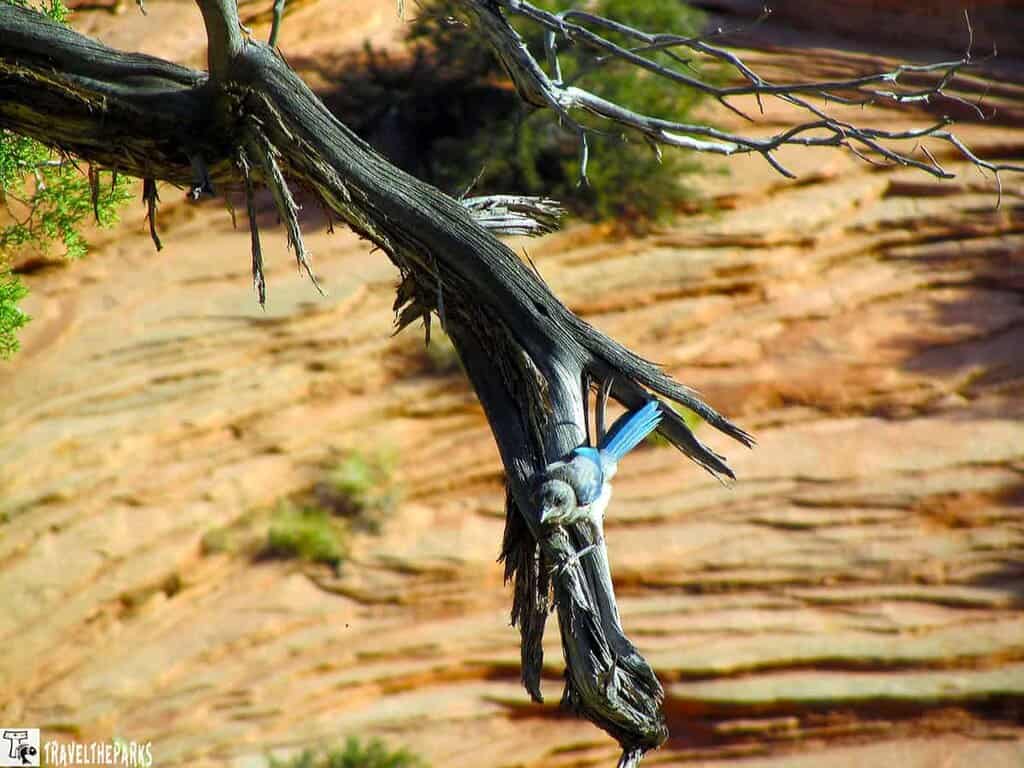
The formations in Zion are monumental, and Checkerboard Mesa is unique. Crazy Quit Mesa is another cross-bedded mountain next to Checkerboard. It’s like a lunar landscape among the red rocks as we walked around the area looking at the flora and fauna in the morning’s grandeur light. This area differs from the rocks you see in the main section of Zion Canyon.
Final Thoughts: A Fantastic Day in Zion National Park – A Symphony of Nature’s Wonders
It’s important to remember that you’re following in the footsteps of ancient Native peoples, the first to venture into these massive canyons. As you gaze upward, take in the cream, pink, and red canyon walls set against the brilliant blue sky above. Zion is a wonderful place to experience wilderness, especially in the early morning when wildlife is most active. As an early riser, I love sitting quietly and occasionally catching glimpses of deer or wild turkeys.
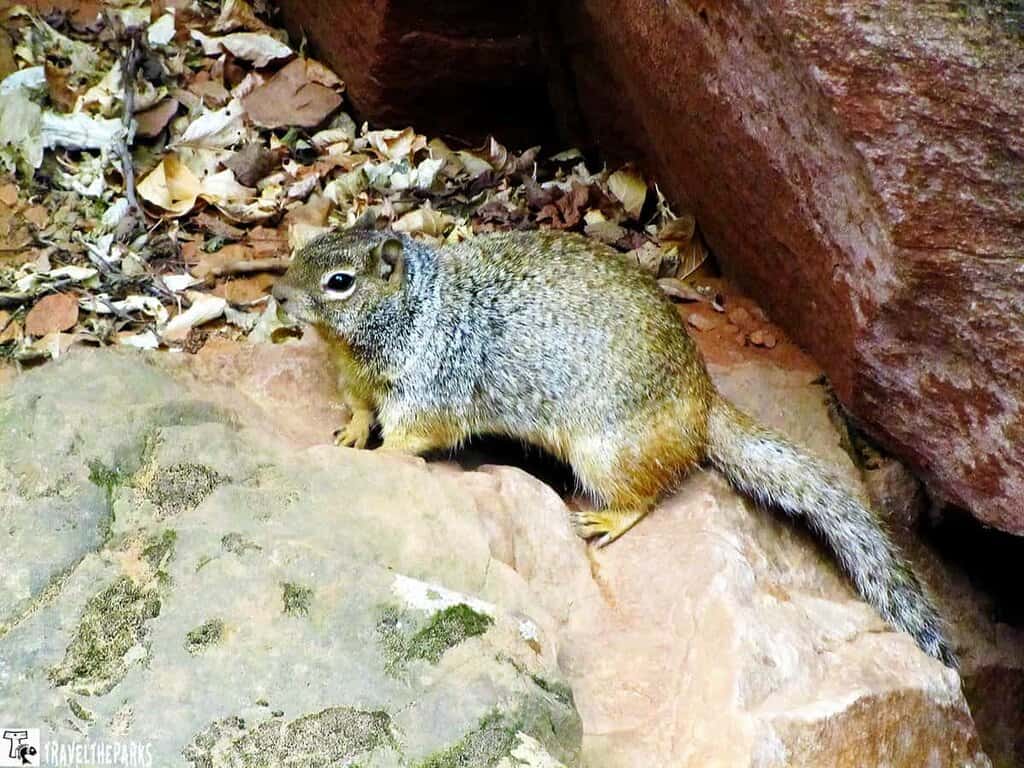
I do, however, feel that this wilderness is fragile, and if the crowds continue, it will not last. Zion does a good job. By using propane shuttle buses to take the vast number of guests into the park in the summer. However, the sheer number of people visiting is overwhelming the systems put in place. If I visit again, I’d probably go in early spring or late fall to avoid the crowds.

Zion National Park is probably our favorite of all the Utah 5 national parks. Adding hikes to your itinerary when spending time in Zion National Park will give you a better perception of the park. We loved watching the deer graze every evening, quite unfazed by the human activity around them. You should plan an itinerary for spending a day in Zion National Park so you can make the most of your time in the park. Bryce Canyon is our next destination; however, we leave Zion with a few favorite hikes and incredible memories.
What were your most memorable moments in Zion? Share in the comments below.

